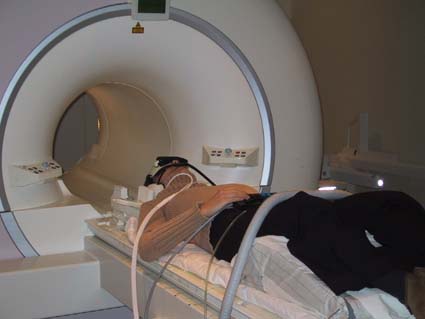AN OPEN DOOR REVIEW OF CLINICAL, CONCEPTUAL, PROCESS AND OUTCOME RESEARCH IN PSYCHOANALYSIS IV
Message + Media
AAP in Neurobiology Research
Buchheim, A., & George, C. (2012). Using the AAP in neurobiology research. In: C. George & M. West, M. (Eds.), The Adult Attachment Projective Picture System (pp. 253-274). New York: Guilford Press.
Adult Attachment Representation in an fMRI Environment
Buchheim A, George C, Kächele H, Erk S & Walter H (2006) Measuring adult attachment representation in an fMRI environment: concepts and assessment. Psychopathology 39: 136-143

Human attachment is defined as a biologically based behavioural system that influences motivational, cognitive, emotional, and memory processes with respect to intimate relationships (parents, life partner, own children). Recent neurobiological studies in this field have in common that they investigated social relationships by examining fMRI neuroimaging patterns while individuals viewed pictures of their beloved relationship partner versus friends, acquaintances, strangers or mothers responses to their young children. The researchers showed that the neural underpinnings of these unique intimate emotional states are linked to functionally specialized areas in the brain. Conceptualizing this work from a behavioral systems-attachment theory perspective, these studies did not directly address the subject´s attachment representational system. Traditional attachment theory and research has been built on the analysis of attachment narratives, called “attachment representation.†The Adult Attachment Projective (AAP) developed by George & West (2001) is a set of attachment-based schematic pictures. It is constructed to increasingly activate the participant’s attachment system in the course of the task, that is, by the introduction of increasingly stressful attachment scenes concluding with pictures of individuals faced death and potential abuse alone. The attachment patterns are evaluated based on individuals’ overall verbal response to the picture set. This paper proposes that the AAP is a fruitful measure to use in an fMRI environment to examine brain activation patterns in adults while they are speaking overtly about attachment stories in a standardized setting.
close
- Stichworte:
- attachment representation,
- fMRI
- Namen:
- Erk S,
- George C,
- Kächele H,
- Walter H
 download: Buchheim_Attachment_fMRI.pdf
download: Buchheim_Attachment_fMRI.pdf